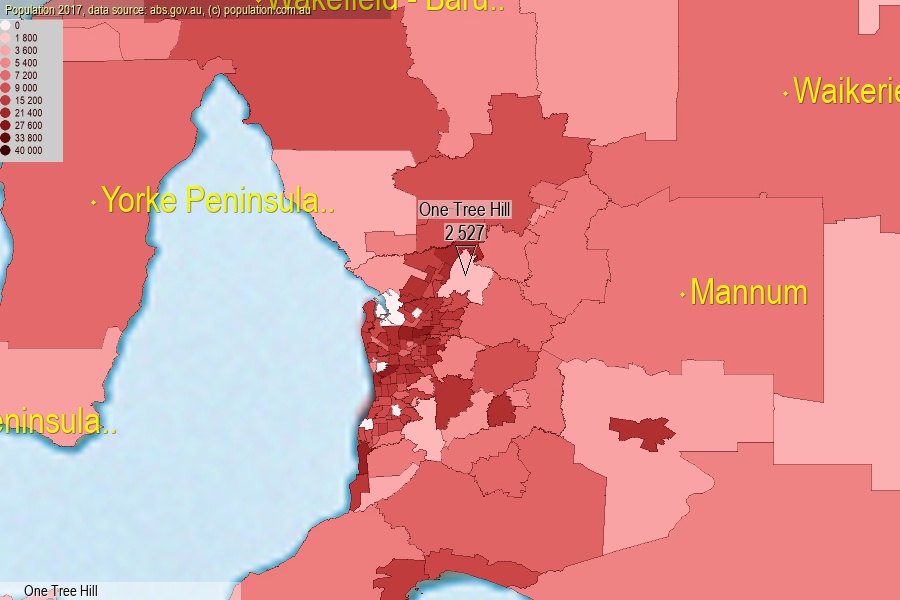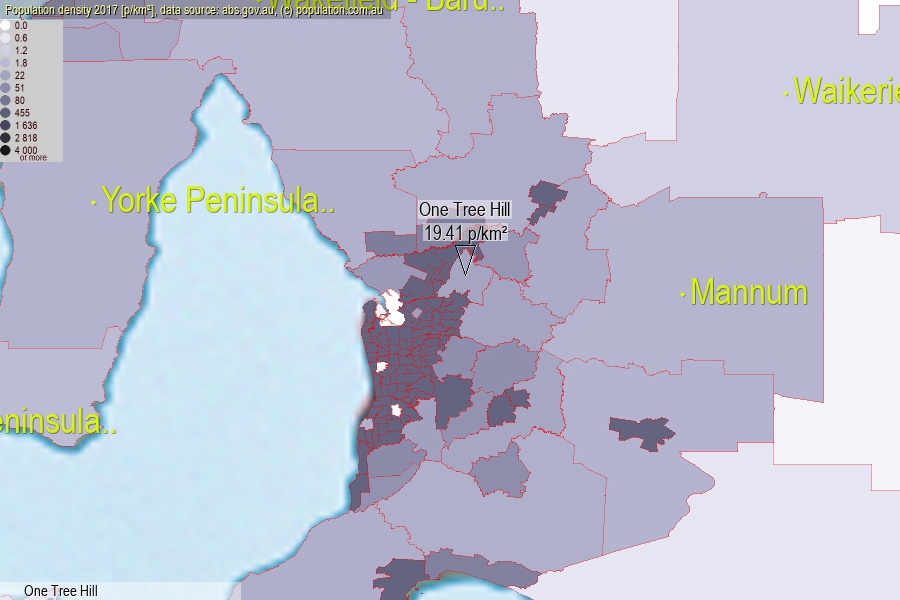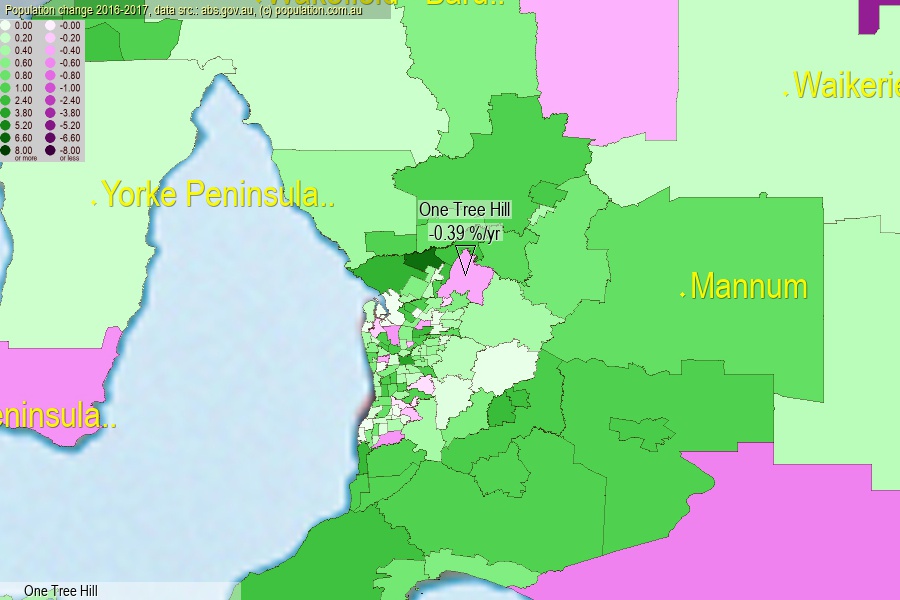 population.com.au
population.com.auLast official estimated population of One Tree Hill (as Statistical Area Level 2) was 2 527 people (on 2017-06-30)[2]. This was 0.01% of total Australian population and 0.146% of SA population. Area of One Tree Hill is 130.20 km², in this year population density was 19.41 p/km² . If population growth rate would be same as in period 2016-2017 (-0.39%/yr), One Tree Hill population in 2025 would be 2 448. [0]



Click to enlarge. One Tree Hill is located in the center of the images.
Population [people], population density [p./km²] and population change [%/year] [2]
View borders » (new window) [4]
[1991-1992] +2.38 %/Yr.
[1992-1993] +1.78 %/Yr.
[1993-1994] +3.18 %/Yr.
[1994-1995] +3.30 %/Yr.
[1995-1996] +3.99 %/Yr.
[1996-1997] +1.66 %/Yr.
[1997-1998] +0.99 %/Yr.
[1998-1999] +1.30 %/Yr.
[1999-2000] +0.43 %/Yr.
[2000-2001] +0.81 %/Yr.
[2001-2002] +0.69 %/Yr.
[2002-2003] +0.15 %/Yr.
[2003-2004] 0.00 %/Yr.
[2004-2005] -0.49 %/Yr.
[2005-2006] -0.11 %/Yr.
[2006-2007] -1.45 %/Yr.
[2007-2008] -0.93 %/Yr.
[2008-2009] -0.35 %/Yr.
[2009-2010] -0.98 %/Yr.
[2010-2011] -1.23 %/Yr.
[2011-2012] +0.40 %/Yr.
[2012-2013] +0.36 %/Yr.
[2013-2014] +0.32 %/Yr.
[2014-2015] +0.48 %/Yr.
[2015-2016] +0.48 %/Yr.
[2016-2017] -0.39 %/Yr.
[0] Calculated with linear interpolation from officially estimated population
[1] Read more about SA2 and Australian Statistical Geography Standard (ASGS) on abs.gov.au
[2] Population data from Australian Bureau of Statistics (Population and density: 2017; change: 2016-2017)
[3] Digital Boundaries: Australian Statistical Geography Standard (ASGS) 2016.
[4] Border coordinates are simplifyed using Ramer-Douglas-Peucker algorithm.